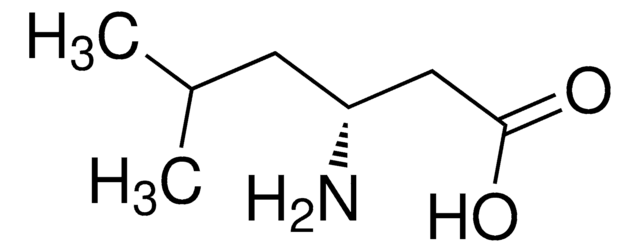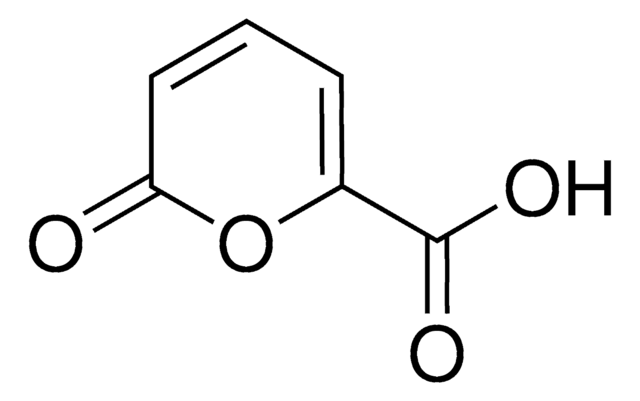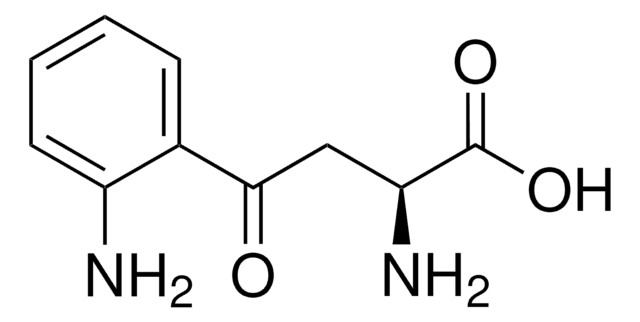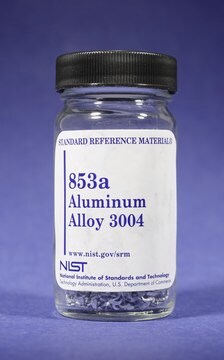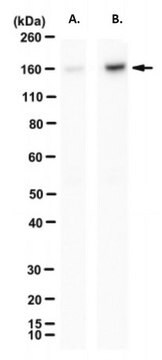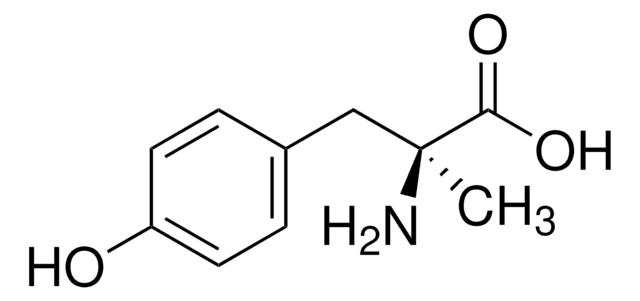MABF2781
Anti-LCMV Nucleoprotein Antibody, clone VL-4
Synonym(e):
LCMV Nucleocapsid Protein, Protein N
About This Item
Empfohlene Produkte
Biologische Quelle
rat
Qualitätsniveau
Antikörperform
purified antibody
Antikörper-Produkttyp
primary antibodies
Klon
VL-4, monoclonal
Aufgereinigt durch
using protein G
Speziesreaktivität
virus
Verpackung
antibody small pack of 100 μL
Methode(n)
ELISA: suitable
activity assay: suitable
flow cytometry: suitable
immunohistochemistry: suitable
neutralization: suitable
Isotyp
IgG2aκ
UniProt-Hinterlegungsnummer
Lagertemp.
-10 to -25°C
Angaben zum Gen
vaccinia virus ... N(956592)
Spezifität
Immunogen
Anwendung
Evaluated by ELISA with recombinant LCMV nucleoprotein .
ELISA Analysis: A serial dilution of this antibody detected recombinant CLMV nucleoprotein.
Tested Applications
ELISA Analysis: A representative lot detected LCMV Nucleoprotein in ELISA application (Eschli, B., et al. (2007). J Virol. 81(21):11650-7).
Flow Cytometry Analysis: A representative lot detected LCMV Nucleoprotein in Flow Cytometry application (Herz, J., et al. (2015). J Exp Med. 212(8):1153-69).
Neutralizing: A representative lot detected LCMV Nucleoprotein in Neutralizing applications (Eschli, B., et al. (2007). J Virol. 81(21):11650-7).
Activity Assay: A representative lot detected Nucleoprotein in lymphocytic choriomeningitis virus (LCMV) (Data courtesy of the Division of Experimental Virology, Department of Biomedicine, University of Basel, Switzerland).
Immunohistochemistry Applications: A representative lot detected LCMV Nucleoprotein in Immunohistochemistry applications (Herz, J., et al. (2015). J Exp Med. 212(8):1153-69; Urata, S., et al. (2018). PLoS Pathog. 14(7):e1007172).
Note: Actual optimal working dilutions must be determined by end user as specimens, and experimental conditions may vary with the end user.
Zielbeschreibung
Physikalische Form
Rekonstituierung
Lagerung und Haltbarkeit
Sonstige Hinweise
Haftungsausschluss
Sie haben nicht das passende Produkt gefunden?
Probieren Sie unser Produkt-Auswahlhilfe. aus.
Lagerklassenschlüssel
12 - Non Combustible Liquids
WGK
WGK 2
Flammpunkt (°F)
Not applicable
Flammpunkt (°C)
Not applicable
Analysenzertifikate (COA)
Suchen Sie nach Analysenzertifikate (COA), indem Sie die Lot-/Chargennummer des Produkts eingeben. Lot- und Chargennummern sind auf dem Produktetikett hinter den Wörtern ‘Lot’ oder ‘Batch’ (Lot oder Charge) zu finden.
Besitzen Sie dieses Produkt bereits?
In der Dokumentenbibliothek finden Sie die Dokumentation zu den Produkten, die Sie kürzlich erworben haben.
Unser Team von Wissenschaftlern verfügt über Erfahrung in allen Forschungsbereichen einschließlich Life Science, Materialwissenschaften, chemischer Synthese, Chromatographie, Analytik und vielen mehr..
Setzen Sie sich mit dem technischen Dienst in Verbindung.